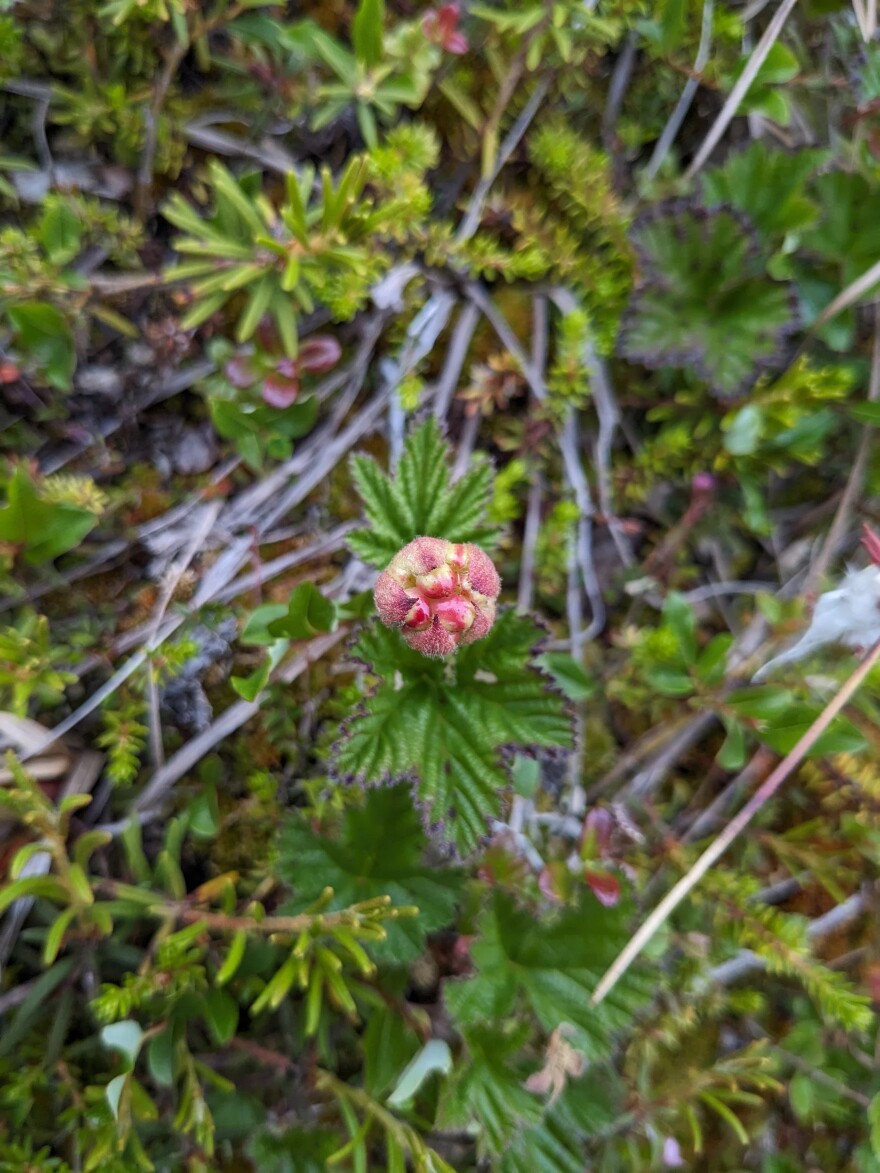Mary Hostetter said that she’s noticed continuous environmental change to the land around her home, the village of Igiugig on Lake Iliamna. For example, she said that the lake no longer freezes every winter like it did when she was a child, roughly 20 years ago. And as the growing season lengthens and land dries out more than it used to, more and more shrubs are encroaching in low-lying, marshy areas, a process called shrubification.
“Igiugig is definitely seeing more shrubification and trees growing. So how does that impact our traditional foods, especially our berries, our tundra berries?” Hostetter asked.
Hostetter and Bill Kane, both tribal stewards, are developing a program that enables local community members to identify and track environmental changes like these: it's Indigenous-led community-based environmental monitoring.
The program, Hostetter said, gives agency to tribal communities as they collect data over time, especially in the face of potential developments like mines or road construction.
“This provides that baseline data set so that if something were to happen down the road, we could say, ‘you know, we've been monitoring these waters for the past 20 years and something changed this year when this happened,’” said Hostetter. “So really providing us that agency to show that we can monitor our lands, waters, and spirit relatives, and also [providing] us that opportunity to back up what we're seeing in our environment.”
In the past, Hostetter said, environmental monitoring programs in the region didn’t often coordinate with tribal communities. Now, the tribal stewards said, they see an opportunity to collaborate with outside agencies.
Hostetter said that their program is guided by an Indigenous Guardians framework. That’s based on programs developed by First Nations in Canada, which in turn is based on programs in Australia. The ultimate goal, she said, is to create a similar framework, adapted to Bristol Bay.
“That means that these are Indigenous-value guided programs primarily informed by our Indigenous people who are on the land every single day,” Hostetter said.

In Indigenous Guardians programs, experts draw from Indigenous knowledge as well as training to not only monitor the land, but guide the relationship between it and those who use it. Hostetter and Kane said that community-based monitoring is a step toward an Indigenous Guardians program.
Kane said the project is still in its planning phase. The tribal stewards will continue to coordinate with seven communities around Lake Iliamna and Lake Clark to develop the program, which is currently funded with federal grant money, largely through the National Fish and Wildlife Foundation. They meet with community representatives and provide resources, such as material from the Indigenous Guardian Toolkit, to help build the program.
They’re also working with institutions such as the National Parks Service, the U.S. Geological Survey, and the U.S. Fish and Wildlife Service to develop relationships for long-term federal funding. Kane said that they look to Canada for inspiration, where Indigenous Guardian programs receive broad funding like any other federal agency. There are now 120 programs throughout Canada, and they create jobs and provide opportunities for training.
Hostetter and Kane believe that the Bristol Bay program will eventually provide jobs as well.
“Bringing in the confidence to our people that we can do these jobs," Hostetter said. "Our ancestors were the original stewards of this land, and we can take back that responsibility and be those people. We are those people, but we can be more fully in these spaces if we're also being able to make a living off of it.”
One important project this summer is reestablishing a stream gauge at the mouth of the Kvichak River. Kane said that the gauge had been dormant since the mid-80s. The gauge is currently collecting rough stream discharge data and will be giving precise data before the year is over.
“So as long as we have that funding in place, we'll have active stream discharge data for the largest watershed in Bristol Bay here. And it's also collecting stream temp data. So this is kind of like the baseline data that we can expand more research efforts off of,” Kane said.
Hostetter said that they’re also working with the Indigenous Sentinels Network to adapt the network’s apps to the region. These apps assist with environmental data collection.
Hostetter and Kane’s program recently won a $5,000 Edge Prize for community resilience. The award highlights projects from rural, Indigenous and traditionally marginalized communities in the Salmon Nation, a bioregion stretching from the Yukon to central California. Leaders of these projects are called Edgewalkers. Hostetter said that the Edgewalker opportunity allowed them to connect with other Salmon Nation peoples.
Going forward, Hostetter and Kane plan to continue to expand their work. They want to study freshwater fish species, especially as sports fishing grows in popularity, research to help the region prepare for wildfires, and bring their work into schools.
To get in touch with Hostetter or Kane about the program, email them at tribalstewardship@igiugig.gov.
Get in touch with the author at christina@kdlg.org or 907-842-2200.
This article has been corrected for clarifying terminology.



